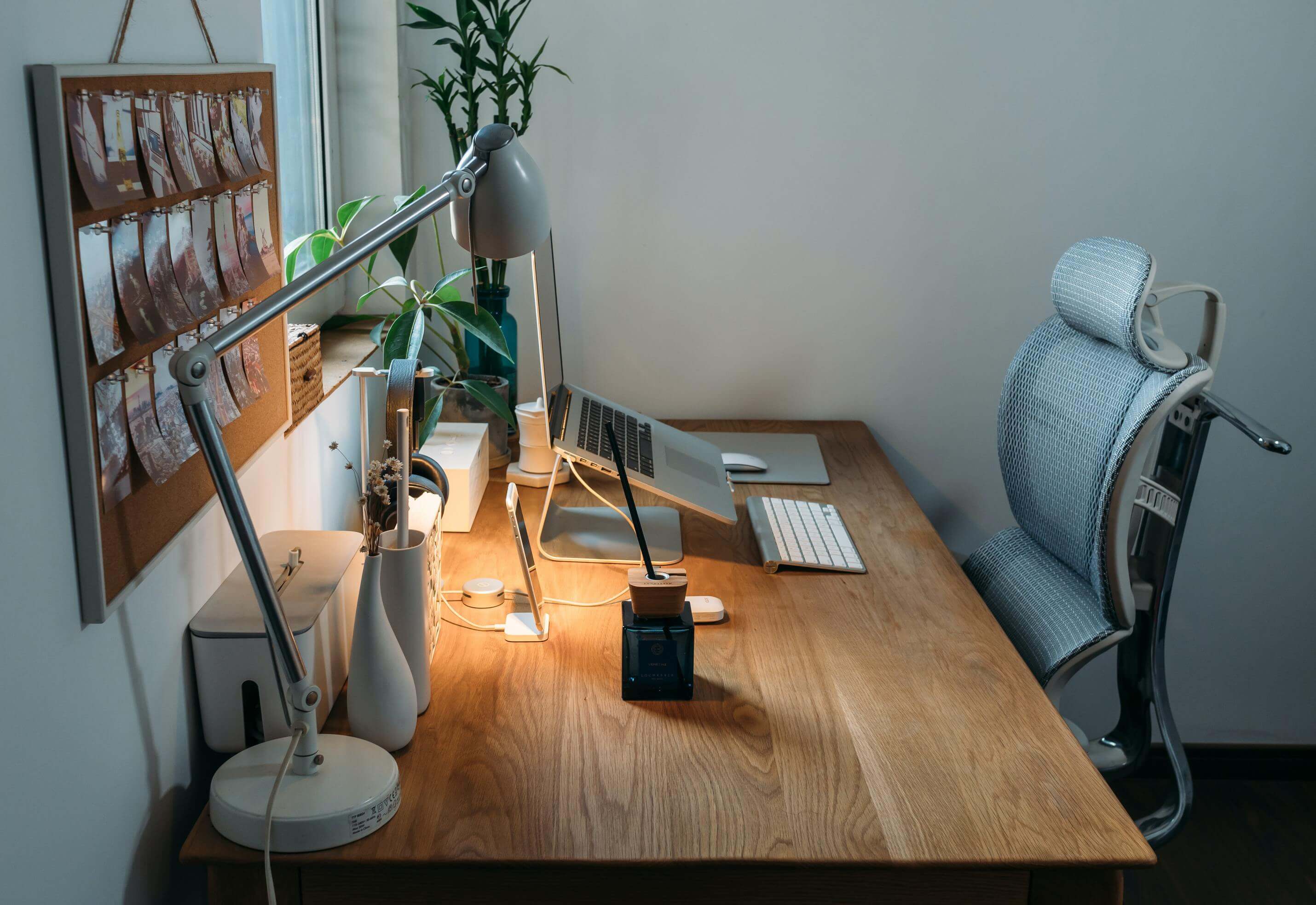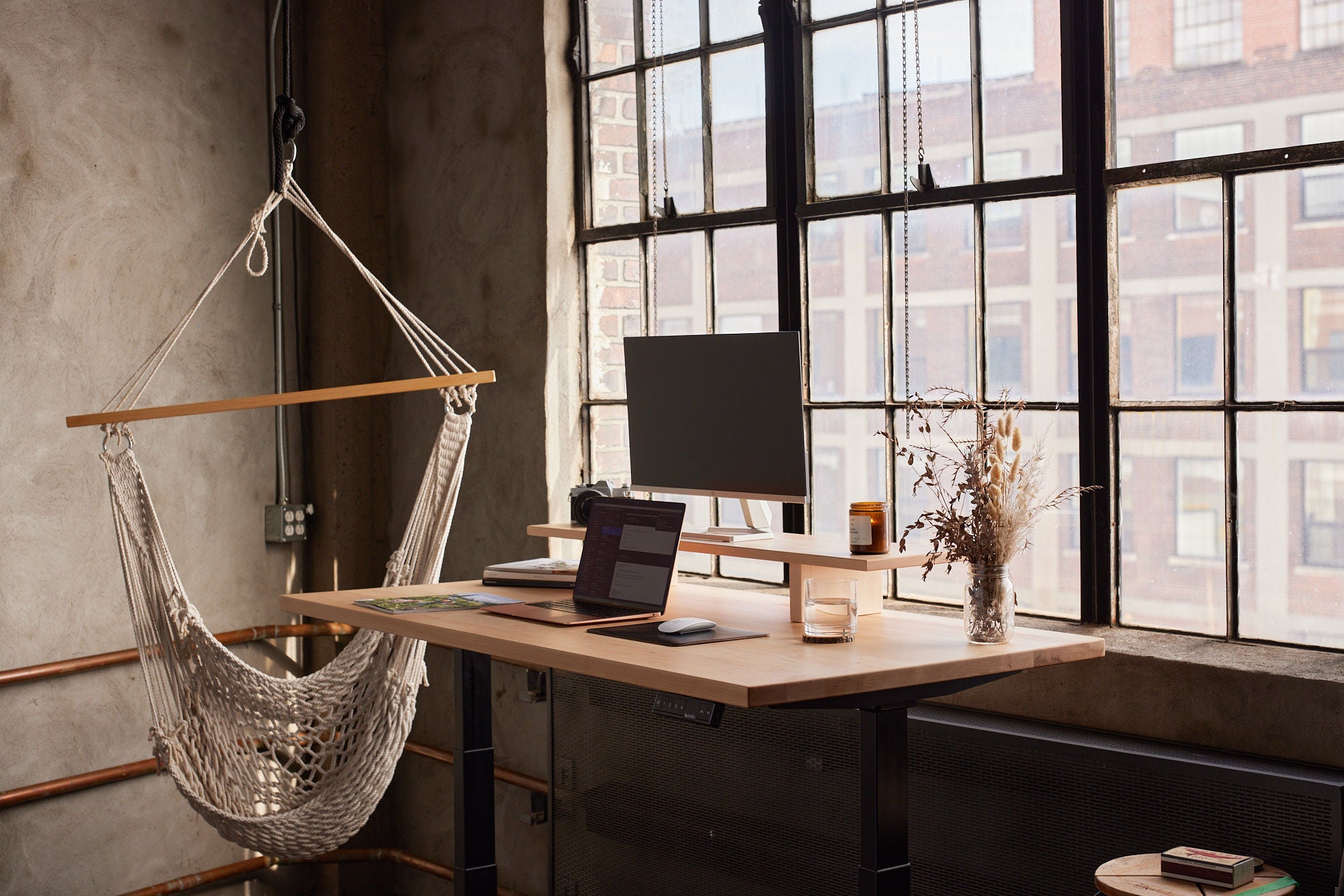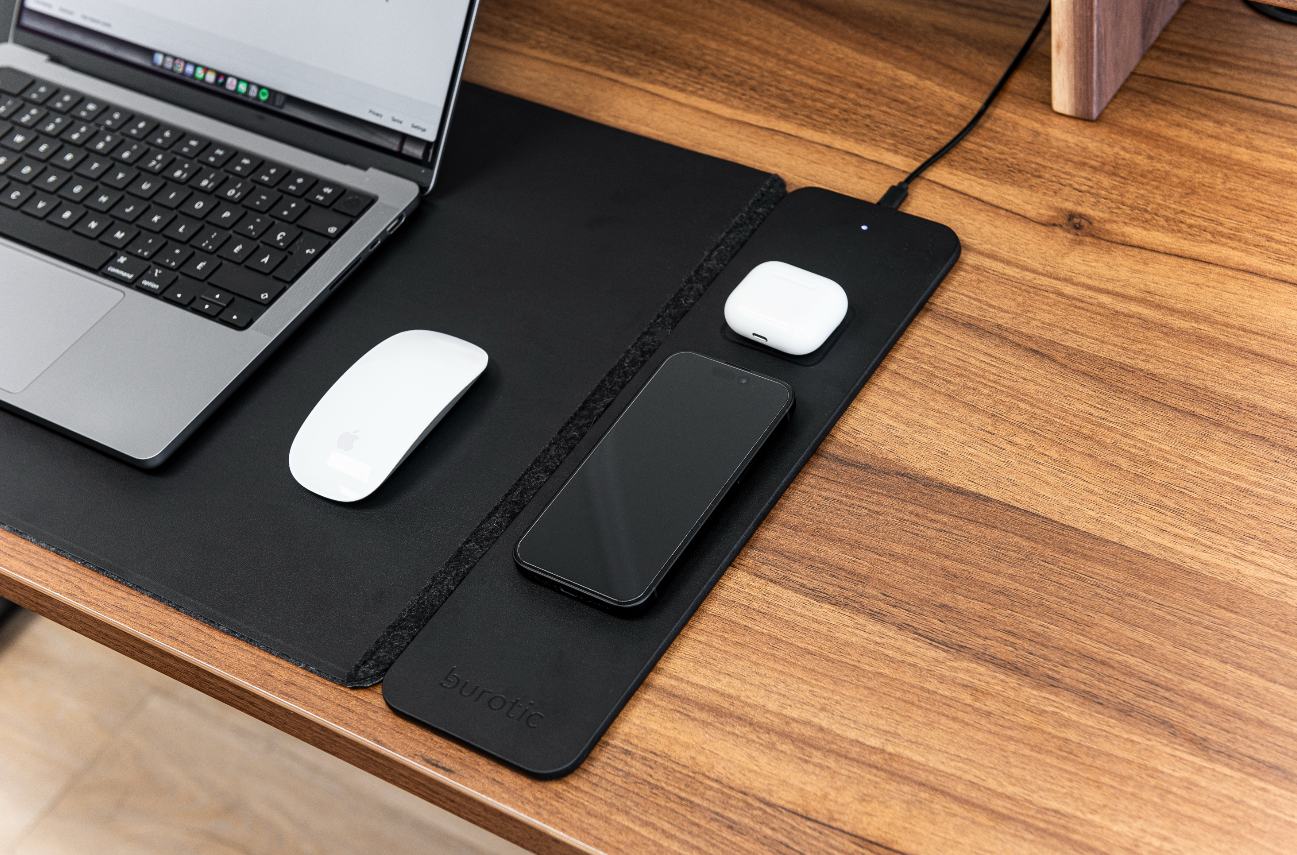Introduction
Many of us are burning the midnight oil when it comes to working. We spend so much of our day working, but our workspace is often put on the back burner. Yet, a well-designed and ergonomic workspace can make a big change in our day. And it could be the difference between having a very successful day or a crippling nightmare at the office.
What are the benefits of having an ergonomic workspace?
Lower Long-term Costs
Expensive medical can be swerved by setting up an ergonomic workstation. Workers who spend multiple constant hours in a seated position are more likely to develop musculoskeletal disorders. Investing in an ergonomic workspace can offer the following reductions according to "The Benefits of Workplace Ergonomics":
• 59% less chance of musculoskeletal disorders
• 65% less incidence rate.
• 75% fewer workdays lost because of stress and discomfort
• 68% less spent medical expenses [1]
With such impressive stats, setting up an ergonomic workspace should be the bottom line.
Improved Productivity
People who are comfortable and relaxed function better. It is estimated that someone is 25% more productive when they are working at an ergonomic workspace, according to "The Benefits of Workplace Ergonomics" [2].
Improved Quality
Workers who are working under poor ergonomic conditions are more easily fatigued or frustrated. Workers who have a lot on their plate don't feel motivated because their bodies feel worn out. According to "The Benefits of Workplace Ergonomics," a proper ergonomic workspace can reduce workers' errors by up to 68% [3]. Now that's a number we can work with!
Higher Employee Engagement
Comfortable employees are happy employees. When a company takes the time and effort to invest in ergonomic workspaces for its employees, those employees will notice it. They will feel more appreciated, comfortable, and encouraged. This can lead to a smaller turnover, fewer sick days, and a boost in company morale. "The Benefits of Workplace Ergonomics" statistics show an average reduction of 48% in employee turnover. Also a 58% reduction [4] in employee absenteeism in companies that provide ergonomic workspaces.
Ergonomic Workspace Improves Safety Culture
When a company or an individual worker makes the transition to an ergonomic workspace, the core values of safety and health come first. This transition creates and fosters a safety and health culture that leads to improved performance.
Is an ergonomic workspace worth the initial investment costs?
Whether you are a company considering ergonomic workspaces for your employees or an individual worker considering it for yourself, you need to ask yourself these three questions:
• Do you want better revenue?• Are you wanting to decrease your costs?
• Do you want to choose safety and health? If your answer is yes to these questions, then an ergonomic workspace is most definitely worth the cost. Not only is it great for your business, but it's excellent for you, too.
How to create a more ergonomic workspace
Changing the classic layout of an office can be a lot to take on, but it doesn't have to be. Here are the steps you need to follow in order to create an ergonomic workspace:
Choose the right chair
The chair is the most crucial factor in creating an ergonomic workspace. This is due to the worker spending so much time in a seated position. Research shows that around 50% of people suffer from back pain [5], many directly related to poor seating. So when you are spending 8 to 15 hours daily in any non-ergonomic chair you are asking for ailments. Such as back and neck pain in the long run.
There are several options available on the market for ergonomic chairs. But many use the word "ergonomic" loosely or even dishonestly.
These important factors should be considered for ergonomic workspace chairs:
• The height of the chair. You should be able to reach your desk with ease and without any strain on your shoulders, arms, neck, or back.• A reclining backrest with a tilt. An office chair that reclines and tilts with tension control is critical in reducing stress in your spine.
• Solid lumbar support. Look for a chair that provides a natural curve to support your lower back.
• Seat depth. The chair should allow enough depth to make sitting comfortably. The best depth in adjustable seats is between 14 and 18.5 inches.
• Armrests matter. Armrests should be height adjustable. They should also pivot inwards. This is so you can support the full length of your forearm while you are performing tasks at your desk.
• Good quality materials. An ergonomic chair should be made with comfortable and breathable materials. It should also offer sufficient cushioning.
Choose the right desk
Your desk is fundamental when it comes to your work life. It is the area you use to access your tools. Not only that but complete your tasks, and enjoy your meals more often than not. Therefore, you should have the best desk that the market has to offer. Finding a suitable desk might seem like a hard task. But have no fear because we're here to help.
At burotic we offer the best in solid wood standing desks. Offering choices between our Pioneer, Achiever, and Visionary standing desks. There is something for everyone, including you! Made in Quebec, Canada, our standing desks come with a 10-year warranty. We also offer express shipping options. Which includes a superb 24-hour pick-up option, or delivery to your doorstep in only 5 days. Our desks are not just ergonomic but also unique and a beautiful addition to any office. At burotic, we allow you to step up your work game while being classy and stylish.
Proper Monitor Positioning
These days most desk workers spend a lot of time working on computers. Therefore the position of your monitor matters greatly. Here are some essential tips when it comes to monitor positioning:
The monitor's distance. Experts recommend placing your monitor at least 20 inches in front of you. But close enough that it is still at arm's length. A monitor that is too close stains the eyes. Also if it is too far, it results in bad posture.
The monitor's angle. The ideal place for a monitor is between 10 and 20 degrees. You will need to hold your head at an uncomfortable and unnatural angle if you have a greater angle. This leads to neck strain.
Office lighting. Experts recommend lighting of between 300 and 500 lux. This will suffice in removing shadows and dark spots in the office.
Adjustable monitor stands are available and can be beneficial in monitor placement.
Choose the correct keyboard and mouse
These days there are countless choices available when it comes to a keyboard and mouse. The placement of these two tools is also very important when it comes to creating an ergonomic workspace. This is because they can cause unnecessary leaning, stretching, or crouching if placed wrongly. When placing your keyboard, you should be able to type comfortably with your arms in a natural position. Your wrists should be relaxed and not feel stressed. The mouse should be placed in a position that allows for easy use without needing too much movement for access.
Conclusion on the Ideal Ergonomic Workspace
Whether you have been suffering from discomfort or simply trying to avoid it, you can rest assured knowing that there are ways to make your workspace ergonomic-friendly. By deciding to have a healthy and safe ergonomic workspace, you have already taken the first step towards a better work-life. Now get the ball rolling by looking at the fantastic standing desks burotic has to offer right away. Be unstoppable, Be burotic.
Statistics: [1-4] Indianapolis, USA, 2019, The Benefits of Workplace Ergonomics, Ergoplus https://ergo-plus.com/workplace-ergonomics-benefits/




Benefits of Working on an Adjustable Desk/Using a Standing Desk